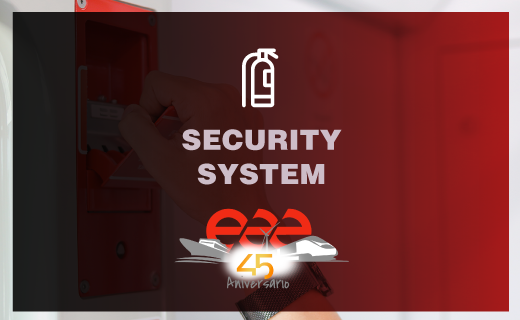As technology advances, travelling by train has become increasingly safe thanks to a variety of innovative systems designed to ensure passenger protection and service efficiency. In general, railway safety has evolved, like everything else, towards the preventive side. The aim is to minimise human failure through digitalisation and sensorisation. Thus, prevention with artificial intelligence and the internet of things takes precedence. Let’s explore some of the key features that make train travel safe.
“Visible” Safety Systems
Security Staff
From stations to trains, security staff deploy an essential physical presence. This human work is essential in order to prevent and deal with problematic situations in real time.
Access Control
Physical access controls, such as security gates and swipe cards, ensure that only those with authorisation have access to sensitive areas, ensuring the integrity of the train’s crucial spaces.
Surveillance Cameras
Surveillance cameras are strategically placed in stations and on trains, providing constant surveillance. These “electronic eyes” act as a real-time view for security staff.
Firefighting System
Trains are equipped with smoke and heat detectors, which are crucial for identifying fires in their early stages and taking preventive measures.
Fire Suppression Systems
In an emergency, fire suppression systems, such as automatic sprinklers and fire extinguishers, come into action to contain and extinguish any fire outbreak.
Safety Lighting
Adequate lighting in stations and on trains is essential to ensure a safe environment. Visibility is improved for both passengers and security staff, thus reducing the risk of incidents in the event of an emergency.
“Invisible” Safety Systems: Cab Systems
Initially, signalling systems, which were limited to on-track equipment, left the driver with full responsibility for driving, respecting the indications of the signals. As speed increased, this task became more and more complex. To address this challenge, it became imperative to develop control and command systems to assist train drivers in the safe driving of trains, thus giving rise to in-cab signalling.
ASFA (Announcement of Signals and Automatic Braking)
This represents a crucial driving assistance system. Its operation is based on the transmission of information about the appearance of the next signal and, if the train passes a red signal, it automatically activates the emergency brakes. It is imperative that the driver recognises this indication and acts accordingly. In situations in which no action is taken, the system automatically applies the emergency brakes, although, as the marker is closer than the train’s braking distance, there is no guarantee that the red signal will not be exceeded.
ATP Continuous Information Systems
They are the logical evolution of train protection systems. These systems continuously monitor the train’s speed, providing the driver with information on the stopping point and the maximum speed required at any given time. If this speed is exceeded, the system automatically activates the service or emergency brakes as required. Thanks to these systems, the possibility of running a red signal is completely eliminated, resulting in complete accident prevention.
LZB (Linienzugbeeinflussung)
The LZB (Linienzugbeeinflussung), originally from Germany, is used as a protection system on the Madrid-Seville high-speed railway line. This bidirectional, centralised ATP system provides continuous monitoring. The driver receives constant information in the cab about the situation of the train in front, the maximum permitted speed, the current speed and the status of data transmission.
ERTMS (European Railway Traffic Management System)
ERTMS was developed with the aim of uniformly managing all European rail traffic, with its key feature being interoperability. This means that a train with ERTMS on-board equipment from any manufacturer can run on track sections equipped with ERTMS equipment from other manufacturers. In addition, the behaviour of the protection equipment is consistent under the same circumstances. ERTMS is structured in different levels (level 1, 2, 3 and STM – Specific Transmission Module).
These measures are constantly evolving. And as technology continues to advance, we can expect to see even more innovations that will improve safety in railway transport systems. At Triple E we ensure that we stay on the cutting edge of railway safety systems and offer them to our customers, so get ready to embark on a safe and exciting journey!










